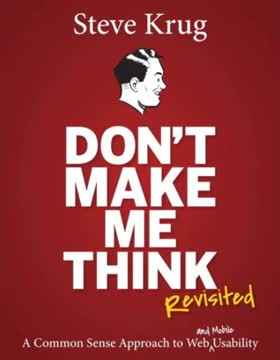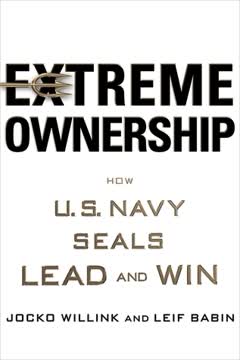نکات کلیدی
1. ارزش ویژه برند مجموعهای از داراییها است که به محصول یا خدمت ارزش میافزاید
ارزش ویژه برند مجموعهای از داراییها (و بدهیها) است که به نام و نماد یک برند مرتبط است و به ارزش ارائه شده توسط یک محصول یا خدمت به یک شرکت و/یا مشتریان آن شرکت میافزاید (یا از آن میکاهد).
آگاهی از برند قدرت حضور یک برند در ذهن مصرفکنندگان است. این آگاهی از شناخت تا یادآوری و آگاهی در ذهن برتر متغیر است. آگاهی بالا میتواند به آشنایی و علاقه منجر شود که میتواند تصمیمات خرید را تحت تأثیر قرار دهد.
کیفیت ادراکشده یکی از ابعاد کلیدی ارزش ویژه برند است. این کیفیت عملکرد مالی را هدایت میکند، اغلب به عنوان یک نیروی استراتژیک برای کسبوکارها عمل میکند و به جنبههای دیگر ادراک برند مرتبط است. کیفیت ادراکشده میتواند یک برند را متمایز کند و قیمتگذاری ممتاز را توجیه کند.
وفاداری به برند یک بعد اصلی از ارزش ویژه برند است. این وفاداری فراهم میکند:
- جریان فروش و سود قابل پیشبینی
- کاهش هزینههای بازاریابی
- مانعی برای ورود رقبا
- زمان برای پاسخ به تهدیدات رقابتی
2. هویت قوی برند برای ساخت و حفظ ارزش ویژه برند ضروری است
هویت برند مجموعهای منحصر به فرد از تداعیهای برند است که استراتژیست برند به دنبال ایجاد یا حفظ آن است. این تداعیها نشاندهنده آنچه برند برای آن ایستاده و وعدهای به مشتریان از سوی اعضای سازمان است.
ساختار هویت برند شامل:
- هویت اصلی: جوهره مرکزی و بیزمان برند
- هویت گسترشیافته: عناصری که بافت و کامل بودن را فراهم میکنند
- پیشنهاد ارزش: مزایای عملکردی، احساسی و خودبیانی
اجتناب از تلههای هویتی ضروری است:
- تله تصویر برند: اجازه دادن به مشتریان برای تعیین برند
- تله موقعیت برند: تمرکز فقط بر روی شعارهای تبلیغاتی
- تله دیدگاه خارجی: نادیده گرفتن ساخت برند داخلی
- تله تمرکز بر ویژگیهای محصول: نادیده گرفتن ابعاد دیگر برند
3. تداعیهای سازمانی میتوانند مزیت رقابتی پایدار فراهم کنند
یک سازمان معمولاً پایدارتر، پیچیدهتر و دائمیتر از یک خط محصول خاص است. بنابراین، ادراک یک سازمان برای رقبا دشوارتر از ویژگیهای خاص برند است که میتوان به راحتی از آنها پیشی گرفت.
انواع تداعیهای سازمانی:
- جهتگیری جامعه/اجتماعی
- کیفیت ادراکشده
- نوآوری
- تمرکز بر مشتری
- حضور و موفقیت
- جهتگیری محلی در مقابل جهانی
مزایای تداعیهای سازمانی:
- تمایز در بازارهای شلوغ
- اعتبار برای ادعاهای محصول
- ارتباط احساسی با مشتریان
- پایهای برای گسترش برند
4. شخصیت برند به ایجاد ارتباطات احساسی با مشتریان کمک میکند
شخصیت برند میتواند به عنوان مجموعهای از ویژگیهای انسانی مرتبط با یک برند خاص تعریف شود.
پنج بعد اصلی شخصیت برند:
- صداقت (خاکی، صادق، سالم، شاد)
- هیجان (جسور، پرانرژی، خلاق، بهروز)
- شایستگی (قابل اعتماد، هوشمند، موفق)
- پیچیدگی (طبقه بالا، جذاب)
- سختی (بیرونی، سخت)
مزایای شخصیت برند:
- وسیلهای برای خودبیانی مشتری
- پایهای برای روابط مشتری-برند
- نمایندگی از مزایای عملکردی
5. ثبات در هویت برند در طول زمان کلید ساخت برندهای قوی است
بدون شک هدف باید ایجاد هویتی مؤثر باشد که موقعیت و اجرای آن پایدار بماند و منسوخ و/یا خستهکننده نشود.
مزایای ثبات:
- مالکیت یک موقعیت در ذهن مصرفکنندگان
- مالکیت نمادهای هویتی
- کاراییهای هزینه در بازاریابی
چالشهای حفظ ثبات:
- فشار برای رقابت بر سر قیمت
- افزایش تعداد رقبا
- تکهتکه شدن رسانهها و بازارها
- وسوسه تغییر یک استراتژی صحیح
- فشار برای نتایج کوتاهمدت
6. استفاده از ارزش ویژه برند از طریق گسترشها میتواند فرصتهای رشد جدید ایجاد کند
یکی از دستورالعملهای موفقیت استراتژیک ایجاد و استفاده از داراییها است. با آگاهی، کیفیت ادراکشده، تداعیها و وفاداری مشتری، برند معمولاً قدرتمندترین دارایی است که یک شرکت دارد.
انواع استفاده از برند:
- گسترش خط: نسخههای جدید در همان کلاس محصول
- گسترش عمودی: حرکت به بالا یا پایین در قیمت/کیفیت
- گسترش برند: ورود به دستههای محصول جدید
- همبرندسازی: همکاری با برندهای دیگر
ملاحظات برای گسترش برند:
- تطابق با هویت برند
- توانایی ارائه مزیت رقابتی
- پتانسیل برای تقویت یا تضعیف ارزش ویژه برند
- هزینه فرصت عدم توسعه یک برند جدید
7. اندازهگیری ارزش ویژه برند در محصولات و بازارها بینشهای ارزشمندی ارائه میدهد
مدیریت خوب با اندازهگیری خوب شروع میشود و کلید مدیریت یک پورتفولیو مجموعهای مشترک از اندازهگیریها است.
ده معیار ارزش ویژه برند:
- حق بیمه قیمت
- رضایت/وفاداری
- کیفیت ادراکشده
- رهبری/محبوبیت
- ارزش ادراکشده
- شخصیت برند
- تداعیهای سازمانی
- آگاهی از برند
- سهم بازار
- شاخصهای قیمت و توزیع
مزایای اندازهگیری بین دستهای:
- مقایسه با بهترینها
- بینش در استراتژیهای ساخت برند
- ابزارهایی برای مدیریت پورتفولیو برند
- تعادل بین اندازهگیریهای مالی کوتاهمدت و اندازهگیریهای دارایی برند بلندمدت
آخرین بهروزرسانی::
FAQ
What's Building Strong Brands about?
- Focus on Brand Management: Building Strong Brands by David A. Aaker delves into the strategic importance of brand management, emphasizing how brands can be developed and maintained as valuable assets.
- Key Themes: The book covers five major themes, including brand identity development, managing brand systems, and measuring brand equity, using case studies like Kodak and Saturn for illustration.
- Practical Guidance: Aaker offers practical advice for brand managers on creating strong brand identities, leveraging brand equity, and navigating competitive challenges.
Why should I read Building Strong Brands?
- Expert Insights: Authored by David A. Aaker, a leading authority in brand management, the book provides insights from his extensive research and experience.
- Comprehensive Frameworks: It offers frameworks for understanding brand equity and identity, applicable across various industries and markets.
- Real-World Applications: Through numerous case studies, the book illustrates successful brand strategies, helping readers understand real-world implications.
What are the key takeaways of Building Strong Brands?
- Brand Equity Definition: Aaker defines brand equity as assets and liabilities linked to a brand’s name and symbol, affecting the value of a product or service.
- Importance of Brand Identity: A strong brand identity is crucial for differentiation, with a system that includes core and extended identities shaping customer perceptions.
- Managing Brand Systems: Understanding the roles of various brands within a portfolio can lead to synergies and enhance overall brand equity.
How does David A. Aaker define brand identity in Building Strong Brands?
- Unique Set of Associations: Brand identity is a unique set of brand associations that the brand strategist aims to create or maintain, representing what the brand stands for.
- Core and Extended Identity: It consists of a core identity, the timeless essence of the brand, and an extended identity with additional elements for texture and completeness.
- Four Perspectives: Aaker suggests viewing brand identity through four perspectives: brand-as-product, brand-as-organization, brand-as-person, and brand-as-symbol.
How does Aaker define brand equity in Building Strong Brands?
- Assets and Liabilities: Brand equity is defined as a set of assets and liabilities linked to a brand’s name and symbol, impacting the value of a product or service.
- Four Major Asset Categories: These include brand awareness, brand loyalty, perceived quality, and brand associations, each contributing to the brand's overall value.
- Value for Customers and Firms: Brand equity influences customer perceptions and purchasing decisions, creating value for both firms and customers.
What is the "Brand Equity Ten" in Building Strong Brands?
- Comprehensive Measurement Framework: The "Brand Equity Ten" consists of ten measures assessing various aspects of brand equity, such as loyalty and perceived quality.
- Customer-Centric Approach: It focuses on customer perceptions and behaviors, providing insights into how brands are viewed in the marketplace.
- Guides Brand Strategy: These measures help track brand performance over time and inform strategic decisions related to brand positioning.
What is the brand identity system introduced in Building Strong Brands?
- Comprehensive Framework: Aaker introduces a structured approach to managing brand identity, encompassing core and extended identities.
- Four Perspectives: The system encourages viewing the brand from four perspectives: brand-as-product, brand-as-organization, brand-as-person, and brand-as-symbol.
- Value Proposition and Credibility: It aims to provide a clear value proposition to customers while establishing credibility, enhancing the brand-customer relationship.
How does Aaker suggest measuring brand equity over time in Building Strong Brands?
- Tracking Key Metrics: Aaker recommends using quantitative surveys and qualitative research to monitor brand perceptions and equity over time.
- Longitudinal Studies: Conducting longitudinal studies helps observe changes in equity and identify trends impacting market position.
- Adapting Strategies: Regular measurement enables brands to adapt strategies based on customer feedback and market dynamics.
What role does brand personality play in brand management according to Building Strong Brands?
- Definition of Brand Personality: Brand personality is the set of human characteristics associated with a brand, helping connect with customers emotionally.
- Creating Emotional Connections: A strong brand personality fosters emotional connections, enhancing loyalty and engagement.
- Guiding Brand Strategy: It informs communication strategies and helps differentiate the brand in a competitive landscape.
What are some examples of strong brand identities in Building Strong Brands?
- Kodak's Identity: Kodak embodies simplicity and family, with a commitment to quality, built on decades of marketing and innovation.
- Saturn's Unique Approach: Saturn emphasizes customer relationships and a no-haggle pricing strategy, creating a loyal customer base.
- The Body Shop's Values: The Body Shop focuses on social responsibility and environmental consciousness, enhancing brand equity and loyalty.
What are the challenges of building strong brands according to Building Strong Brands?
- Competitive Pressures: Intense price competition and competitor proliferation can dilute brand identity and complicate positioning.
- Market Fragmentation: Fragmented media and markets add complexity, making consistent messaging and brand recognition challenging.
- Internal Organizational Biases: Internal pressures, such as a focus on short-term results, can hinder brand-building efforts.
How can organizations ensure consistency in brand identity according to Building Strong Brands?
- Clear Brand Guidelines: Develop comprehensive guidelines outlining core identity, messaging, and visual elements for consistent communications.
- Regular Training and Communication: Invest in training employees and stakeholders to understand and embody the brand identity.
- Monitoring and Feedback: Implement systems to monitor communications and gather feedback, ensuring the brand remains true to its identity.
نقد و بررسی
کتاب ساخت برندهای قوی نقدهای متفاوتی دریافت کرده است و بهطور میانگین امتیاز ۴ از ۵ را کسب کرده است. خوانندگان از پوشش جامع استراتژیها و مفاهیم برندینگ آن قدردانی میکنند و آن را برای بازاریابان و مدیران برند ضروری میدانند. بسیاری کتاب را بینشافزا و جامع میدانند و از چارچوبها و رویکرد عملی آن تمجید میکنند. با این حال، برخی از مثالهای قدیمی، محتوای تکراری و سبک نوشتاری فنی آن انتقاد میکنند. در حالی که برخی از خوانندگان با نوشتار نویسنده مشکل دارند، دیگران تحلیل دقیق آن را ارزشمند میدانند و آن را با وجود نقصهایش، برای درک ساخت برند ضروری میدانند.
Similar Books















